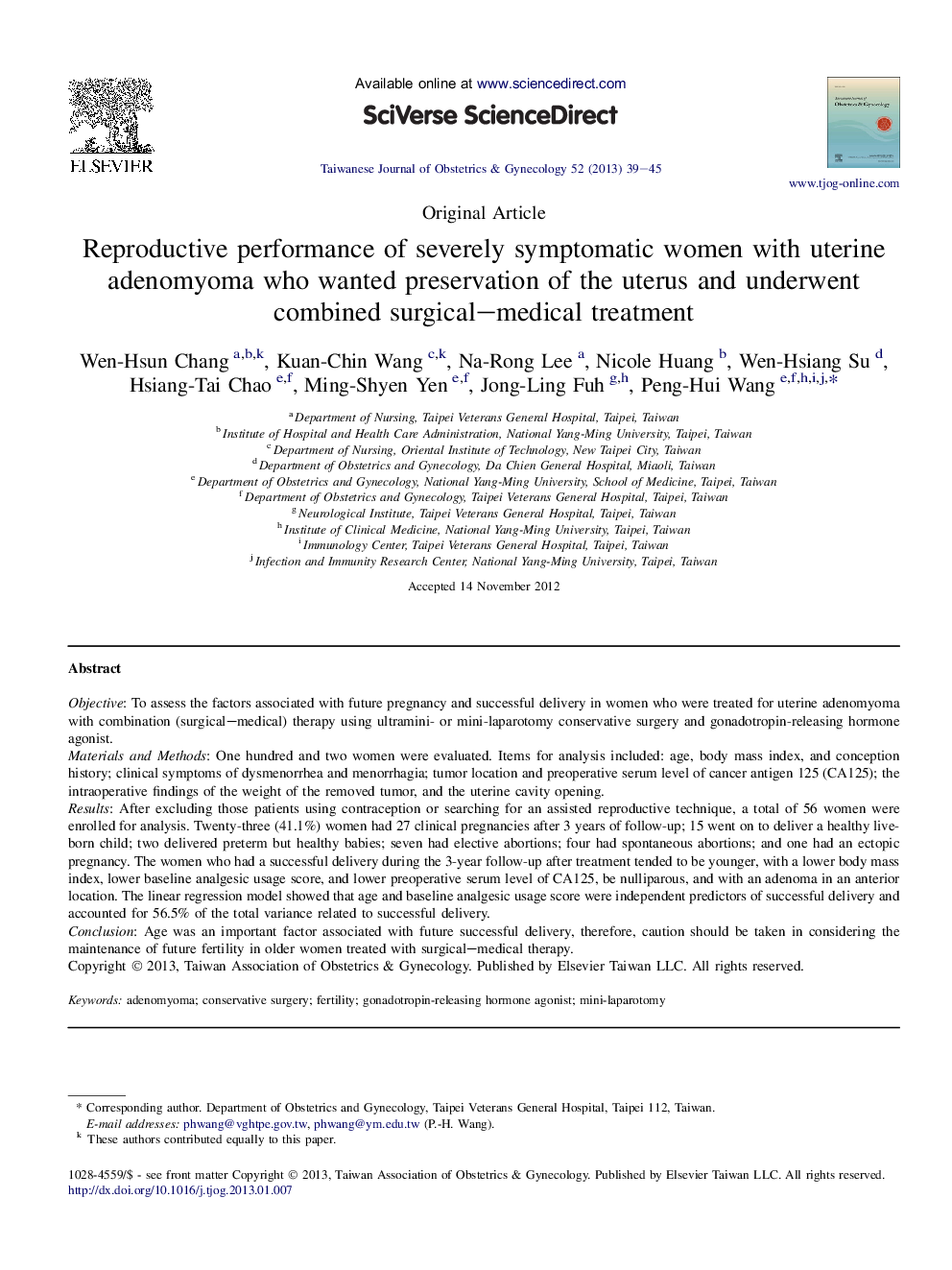| Article ID | Journal | Published Year | Pages | File Type |
|---|---|---|---|---|
| 3975604 | Taiwanese Journal of Obstetrics and Gynecology | 2013 | 7 Pages |
ObjectiveTo assess the factors associated with future pregnancy and successful delivery in women who were treated for uterine adenomyoma with combination (surgical–medical) therapy using ultramini- or mini-laparotomy conservative surgery and gonadotropin-releasing hormone agonist.Materials and MethodsOne hundred and two women were evaluated. Items for analysis included: age, body mass index, and conception history; clinical symptoms of dysmenorrhea and menorrhagia; tumor location and preoperative serum level of cancer antigen 125 (CA125); the intraoperative findings of the weight of the removed tumor, and the uterine cavity opening.ResultsAfter excluding those patients using contraception or searching for an assisted reproductive technique, a total of 56 women were enrolled for analysis. Twenty-three (41.1%) women had 27 clinical pregnancies after 3 years of follow-up; 15 went on to deliver a healthy live-born child; two delivered preterm but healthy babies; seven had elective abortions; four had spontaneous abortions; and one had an ectopic pregnancy. The women who had a successful delivery during the 3-year follow-up after treatment tended to be younger, with a lower body mass index, lower baseline analgesic usage score, and lower preoperative serum level of CA125, be nulliparous, and with an adenoma in an anterior location. The linear regression model showed that age and baseline analgesic usage score were independent predictors of successful delivery and accounted for 56.5% of the total variance related to successful delivery.ConclusionAge was an important factor associated with future successful delivery, therefore, caution should be taken in considering the maintenance of future fertility in older women treated with surgical–medical therapy.
